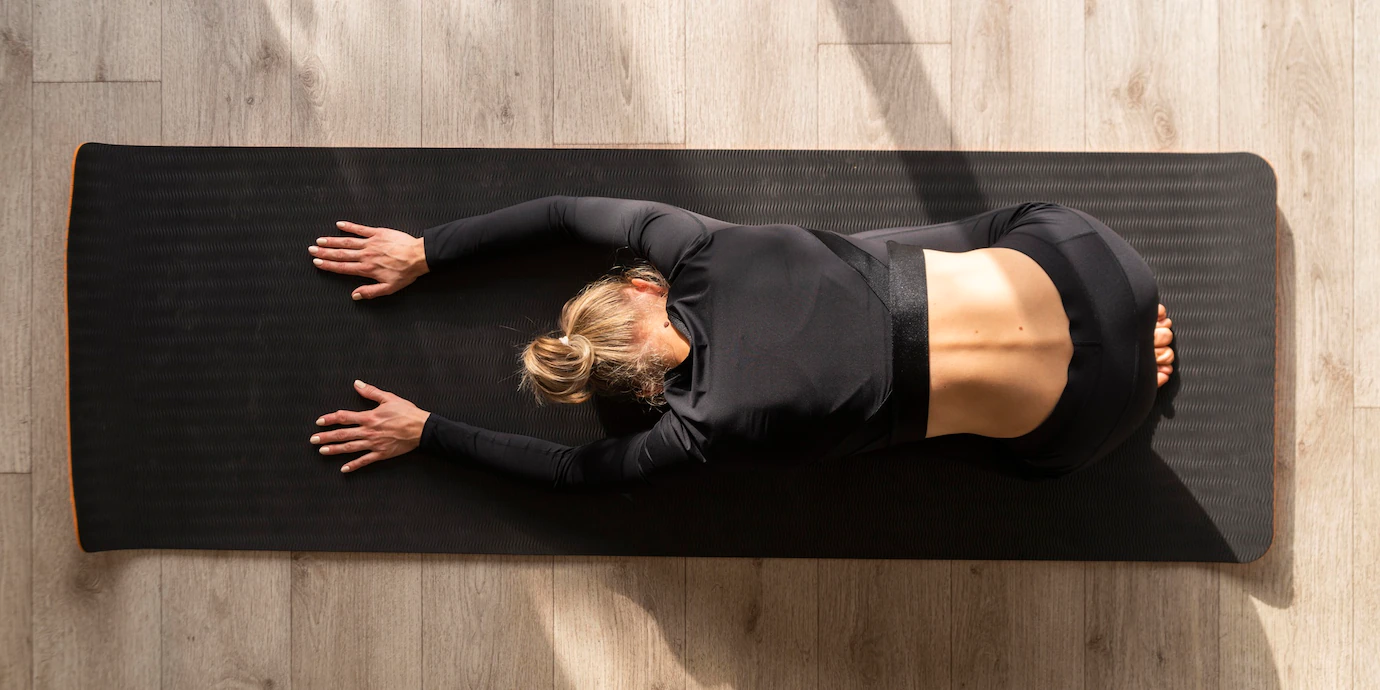Flexibility is an important aspect of overall health and wellness, and incorporating stretching exercises into your routine can help improve flexibility and reduce the risk of injury.
Whether you’re an athlete looking to improve performance or simply want to maintain a healthy lifestyle, incorporating flexibility exercises into your routine can help.
In this blog post, we’ll discuss the top stretching exercises for a healthier lifestyle and how to incorporate them into your routine.
First, let’s talk about why flexibility is so important.
Flexibility refers to the range of motion in your joints and muscles, and a lack of flexibility can lead to pain, injury and poor posture.
When your muscles are tight, they can pull on your joints, leading to pain and inflammation.
Tight muscles can also limit your range of motion, making it harder to perform everyday activities and exercise.
Flexibility exercises, also known as stretching exercises, are designed to lengthen and relax your muscles, allowing for a greater range of motion and reducing the risk of injury.
Stretching can also help to improve posture, relieve tension and stress, and increase blood flow to the muscles.
Now, let’s take a look at some of the best stretching exercises for improving flexibility.
Hamstrings are a common area of tightness, and stretching them can help improve flexibility in the legs and lower back.
To perform this stretch, sit on the floor with one leg extended and the other leg bent with the foot flat on the floor. Slowly lean forward, keeping your back straight, and reach for your toes on the extended leg.
Hold for 20-30 seconds and repeat on the other leg.
Quad Stretch: The Key Flexibility Exercise for the Hips and Legs
Quads are another area of the body that tend to be tight, and stretching them can help improve flexibility in the hips and legs.
To perform this stretch, stand with one foot on a bench or step and bend the knee of the other leg, bringing your heel towards your buttocks.
Hold onto your ankle with your hand and hold for 20-30 seconds. Repeat on the other leg.

Shoulder Stretch: The Best Flexibility Exercise for Relieving Tension and Improving Posture

Tight shoulders can cause tension in the neck and upper back, and stretching them can help improve flexibility and relieve pain.
To perform this stretch, stand with your feet shoulder-width apart and interlace your fingers behind your back.
Slowly raise your arms until you feel a stretch in your shoulders. Hold for 20-30 seconds.
Chest Stretch: The Essential Flexibility Exercise for Improving Posture and Reducing Rounded Shoulders
Tight chest muscles can cause rounded shoulders and poor posture, and stretching them can help improve flexibility and improve posture.
To perform this stretch, stand in a doorway and place one arm on each side of the door frame.
Slowly lean forward, keeping your back straight, until you feel a stretch in your chest. Hold for 20-30 seconds and repeat on the other side.
Lower Back Stretch: The powerful Flexibility Exercise for Relieving Pain and Improving Flexibility
It’s important to note that flexibility should be improved gradually and it’s important to listen to your body.
If you’re new to stretching, it’s important to start slowly and not push your body too hard.
It’s also important to note that stretching should be done after a proper warm up to avoid injury. Warming up can be as simple as taking a brisk walk or jogging in place for a few minutes.
Try to stretch for at least 20-30 seconds per muscle group, and aim to stretch each muscle group at least once per day. Stretching can be done before or after a workout, or as a standalone activity.
If you’re new to stretching, it’s important to start slowly and listen to your body. If you experience pain while stretching, stop immediately and speak with a healthcare professional.
In conclusion, flexibility is an important aspect of overall health and wellness. Incorporating stretching exercises into your routine can help improve flexibility and reduce the risk of injury.
The above-mentioned stretching exercises are a great starting point for improving flexibility, but it’s important to listen to your body and start slowly.
Remember to stretch for at least 20-30 seconds per muscle group and aim to stretch each muscle group at least once per day.
We hope you found this blog post informative and helpful.
If you’re looking for more Stretching Equipment, please check out our stretching shop and follow us on Facebook and Instagram.
We have a wide range of products that can help you improve your flexibility and reduce the risk of injury.
Happy stretching!










